Wildlife watching in the Spanish Pyrenees offers a unique opportunity to observe diverse species like the Pyrenean chamois and golden eagle. The best times for sightings are spring and early autumn, when animal activity peaks. Conservation efforts aim to protect habitats and species while addressing challenges like climate change and human interference. Ethical guidelines ensure a sustainable experience for both wildlife and observers.
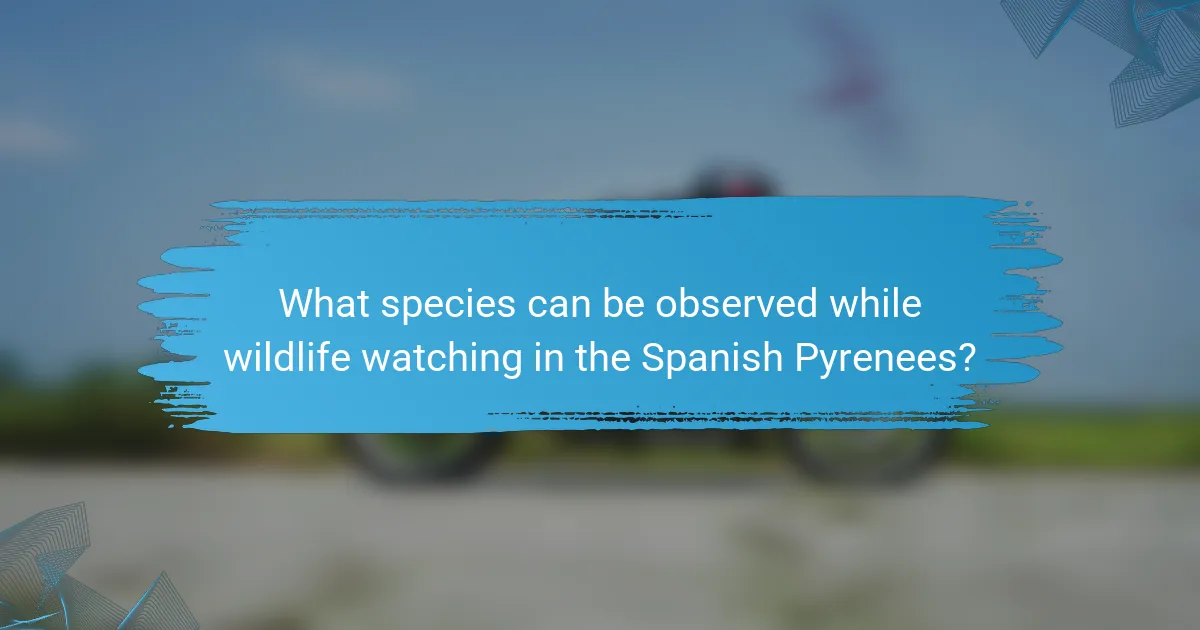
What species can be observed while wildlife watching in the Spanish Pyrenees?
The Spanish Pyrenees offer diverse wildlife, including the Pyrenean chamois, golden eagle, and brown bear. These species thrive in various habitats, from high mountains to lush valleys. Birdwatchers can spot species like the bearded vulture and griffon vulture during spring and summer. Conservation efforts focus on protecting these species and their habitats, ensuring sustainable wildlife watching experiences.
Which mammals are most commonly sighted?
The most commonly sighted mammals in the Spanish Pyrenees include the Pyrenean chamois, red deer, wild boar, and European brown bear. These species thrive in diverse habitats, making them frequent observations for wildlife enthusiasts. The best times for sightings are during dawn and dusk, particularly in spring and autumn when animal activity peaks. Conservation efforts focus on habitat protection and species monitoring to ensure their continued presence in the region.
What bird species are unique to the region?
The Spanish Pyrenees is home to several unique bird species. Notable examples include the Bearded Vulture, which has a wingspan of up to 3 meters, and the Lammergeier, known for its distinctive bone-eating behavior. Other unique species include the Alpine Accentor and the Wallcreeper, both adapted to the mountainous terrain. Conservation efforts are crucial to protect these birds and their habitats from threats such as climate change and habitat loss.
How do amphibians and reptiles contribute to biodiversity?
Amphibians and reptiles play crucial roles in maintaining biodiversity. They contribute to ecosystem balance by controlling insect populations and serving as prey for other species. Their diverse adaptations enhance habitat resilience. Conservation efforts in the Spanish Pyrenees focus on protecting these species and their habitats, promoting ecological stability.
What are the seasonal migrations of wildlife?
Wildlife in the Spanish Pyrenees migrates seasonally, primarily driven by temperature and food availability. Key species include the chamois, marmots, and various birds of prey. Spring and autumn are peak migration times, as animals seek suitable habitats for breeding and winter survival. Conservation efforts focus on protecting migratory routes and habitats to ensure species sustainability.
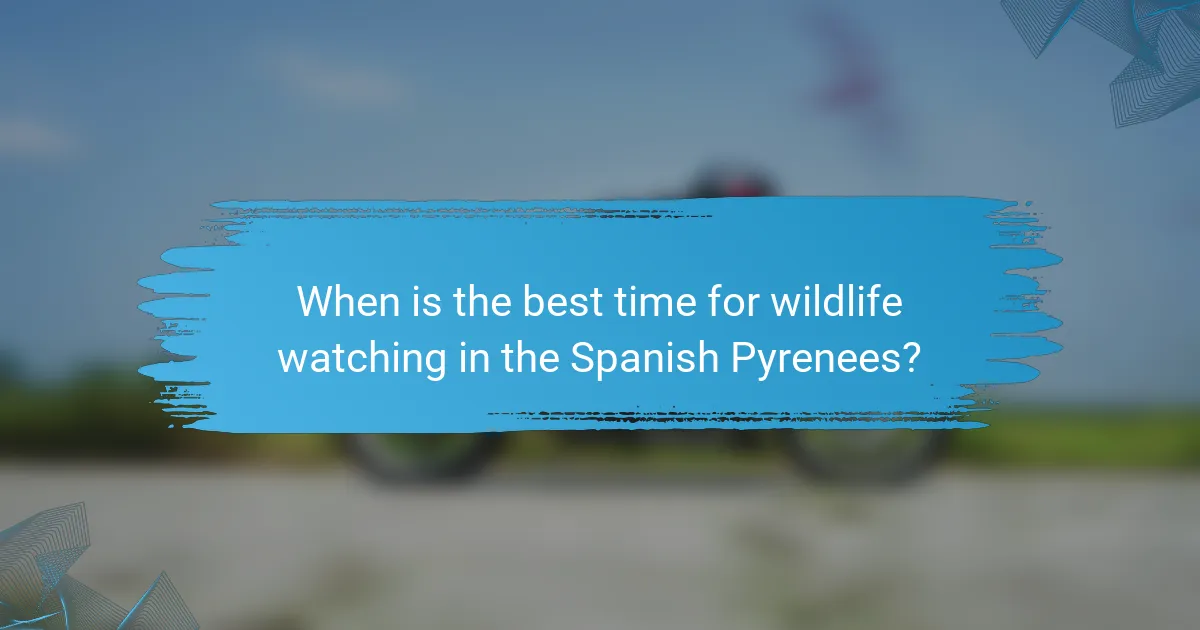
When is the best time for wildlife watching in the Spanish Pyrenees?
The best time for wildlife watching in the Spanish Pyrenees is during spring and early autumn. These seasons offer optimal weather conditions and increased animal activity. In spring, animals emerge after winter, while autumn provides opportunities to observe migratory species. Wildlife enthusiasts can expect to see diverse species such as the Pyrenean chamois and golden eagles during these peak times.
How do seasonal changes affect wildlife visibility?
Seasonal changes significantly impact wildlife visibility in the Spanish Pyrenees. In spring and summer, animals are more active and easier to spot due to warmer temperatures and abundant food sources. Conversely, during autumn and winter, some species may migrate or hibernate, reducing visibility. Weather conditions also play a crucial role; clear days enhance wildlife sightings, while rain or snow can limit opportunities. Additionally, the breeding season in spring increases animal activity, providing optimal viewing chances.
What are the peak months for specific species?
The peak months for wildlife watching in the Spanish Pyrenees vary by species. Generally, the best times are spring and early summer for birds and mammals, while autumn is ideal for observing migratory species. Specific peak months include May and June for chamois and ibex, while October is prime for observing migratory birds.
How does weather influence wildlife activity?
Weather significantly influences wildlife activity by affecting species behavior and habitat conditions. In the Spanish Pyrenees, temperature and precipitation patterns dictate the best times for wildlife watching. For example, warmer months encourage increased animal movement and breeding activities. In contrast, harsh winter conditions can limit visibility and accessibility. Additionally, specific species exhibit unique responses to weather changes; migratory birds may alter their flight patterns based on seasonal temperature shifts. Understanding these dynamics enhances wildlife observation opportunities and informs conservation efforts.
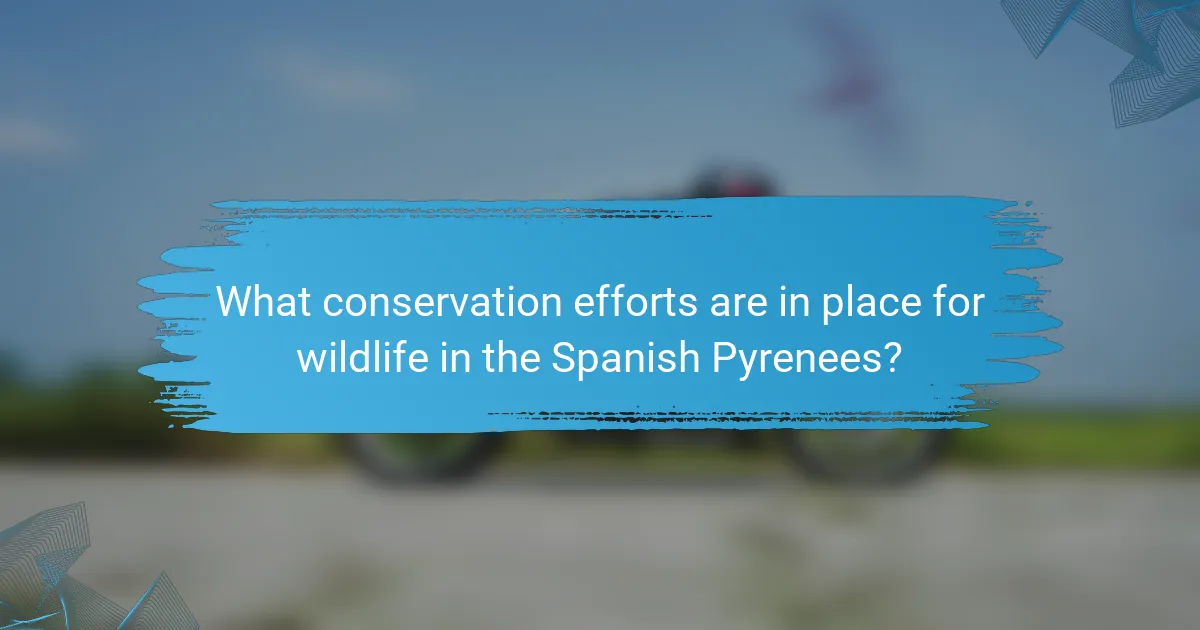
What conservation efforts are in place for wildlife in the Spanish Pyrenees?
Conservation efforts for wildlife in the Spanish Pyrenees include habitat protection, species monitoring, and community engagement. Initiatives like the Natura 2000 network safeguard critical habitats. The Pyrenean Institute of Ecology conducts research on species such as the Pyrenean chamois and bearded vulture. Local communities participate in conservation projects, enhancing awareness and support. These efforts aim to preserve biodiversity and promote sustainable tourism in the region.
Which organizations are leading conservation initiatives?
Several organizations lead conservation initiatives in the Spanish Pyrenees. Notable examples include the WWF, which focuses on habitat preservation, and the Pyrenean Institute of Ecology, which conducts research on local biodiversity.
The Spanish government also plays a crucial role through national parks and conservation programs aimed at protecting endangered species. Local NGOs, such as the Asociación de Naturalistas del Alto Turia, engage communities in conservation efforts, promoting sustainable wildlife watching practices.
These organizations collaborate to enhance awareness and implement effective conservation strategies, ensuring the protection of unique species like the Pyrenean ibex and the bearded vulture.
What role do local communities play in conservation?
Local communities play a vital role in conservation efforts in the Spanish Pyrenees. They contribute to protecting wildlife through sustainable practices, habitat restoration, and education initiatives. Community involvement fosters a sense of stewardship, enhancing conservation outcomes. Local knowledge about species and ecosystems informs effective management strategies, ensuring that conservation efforts align with community needs. Furthermore, collaboration between local populations and conservation organizations can lead to successful wildlife watching programs that benefit both nature and local economies.
How effective are current conservation strategies?
Current conservation strategies in the Spanish Pyrenees show mixed effectiveness. While initiatives have increased awareness and habitat protection, challenges persist. Species like the Pyrenean ibex have seen population rebounds due to targeted efforts, yet threats from climate change and human activity remain significant. Continued monitoring and adaptive management are essential for long-term success.
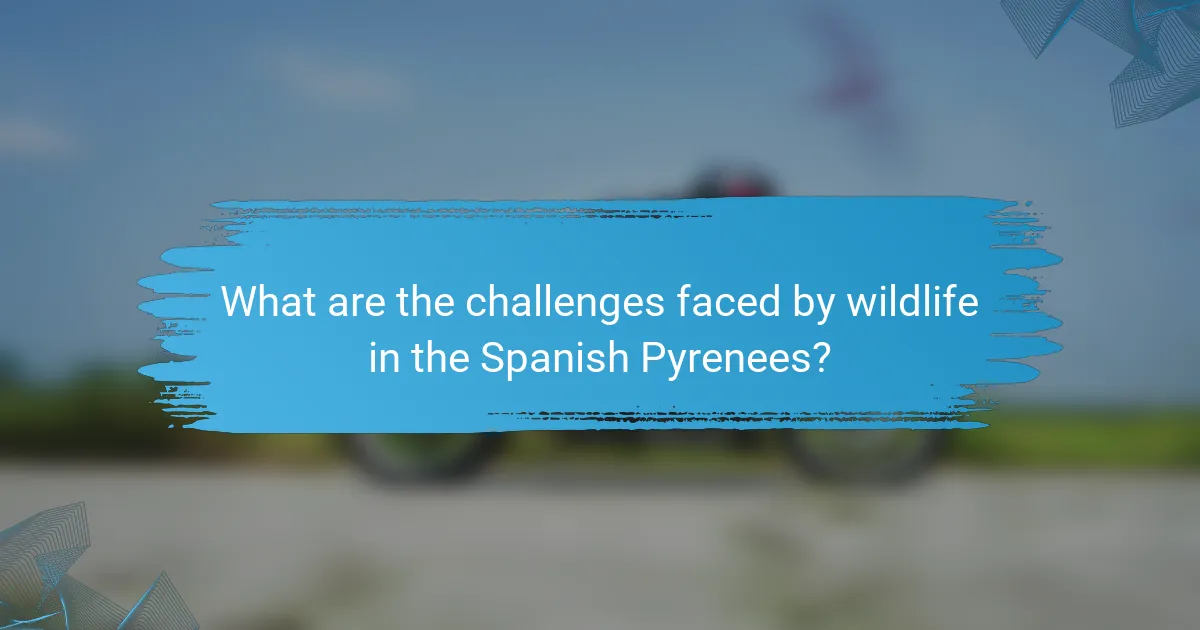
What are the challenges faced by wildlife in the Spanish Pyrenees?
Wildlife in the Spanish Pyrenees faces significant challenges including habitat loss, climate change, and human interference. These factors threaten biodiversity and species survival. Habitat fragmentation disrupts animal movement and breeding, while climate shifts alter ecosystems. Increased tourism and agricultural expansion further exacerbate these issues, impacting conservation efforts.
How does climate change impact local species?
Climate change significantly impacts local species in the Spanish Pyrenees by altering habitats and food availability. Warmer temperatures shift species distributions, forcing some to migrate to higher altitudes. As a result, iconic wildlife like the Pyrenean chamois faces habitat loss. Additionally, changes in precipitation patterns affect vegetation, further threatening biodiversity. Conservation efforts focus on habitat restoration and monitoring species health to mitigate these effects.
What threats do human activities pose to wildlife?
Human activities threaten wildlife through habitat destruction, pollution, and climate change. These factors lead to species decline and loss of biodiversity. In the Spanish Pyrenees, increased tourism and urban development disrupt natural habitats, affecting local species. Conservation efforts aim to mitigate these impacts by promoting sustainable practices and protecting critical habitats.
How is habitat loss being addressed?
Habitat loss is being addressed through conservation efforts, habitat restoration, and sustainable tourism practices in the Spanish Pyrenees. Organizations work to protect species like the Pyrenean chamois and bearded vulture by creating protected areas and promoting responsible wildlife watching. Community involvement enhances awareness and fosters local stewardship. Education programs inform visitors about the ecological significance of the region, encouraging conservation-minded behaviors.
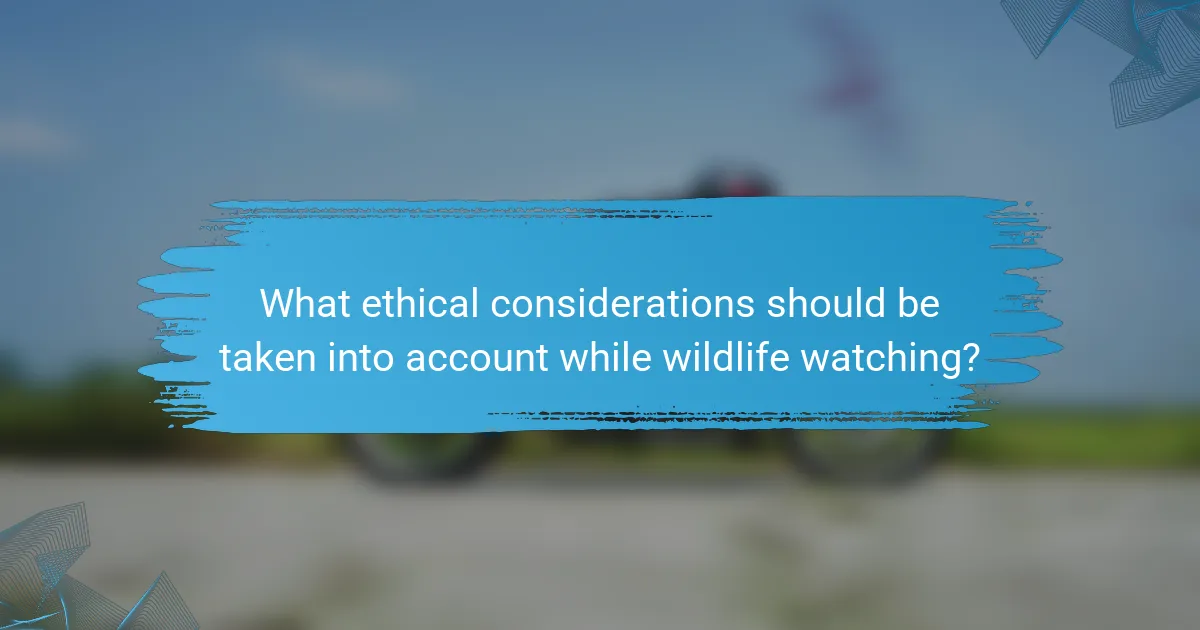
What ethical considerations should be taken into account while wildlife watching?
Ethical considerations in wildlife watching include minimizing disturbance, respecting habitats, and ensuring safety for both animals and observers. Following guidelines helps protect species and their ecosystems.
1. Stay a safe distance to avoid stressing animals.
2. Avoid feeding wildlife, as it disrupts natural behaviors.
3. Stick to marked trails to prevent habitat damage.
4. Limit noise to reduce stress on animals.
5. Educate others about responsible wildlife watching practices.
How can wildlife watchers minimize their impact on ecosystems?
Wildlife watchers can minimize their impact on ecosystems by following responsible practices. Observing from a distance reduces stress on animals. Staying on marked trails protects habitats. Avoiding feeding wildlife maintains natural behaviors. Supporting local conservation initiatives helps preserve ecosystems. Educating others about sustainable wildlife watching promotes awareness.
What guidelines should be followed for responsible viewing?
To ensure responsible viewing during wildlife watching in the Spanish Pyrenees, follow these guidelines: maintain a safe distance from animals, avoid disturbing their habitats, and minimize noise. Respect local regulations and guidelines, which often include designated viewing areas. Educate yourself about the species you may encounter, focusing on their behaviors and conservation status. Always prioritize the well-being of wildlife and the environment.
How can education enhance wildlife watching experiences?
Education significantly enhances wildlife watching experiences by providing knowledge about species, habitats, and conservation efforts. Understanding animal behavior and ecological principles enriches the observation process. For instance, guided educational tours in the Spanish Pyrenees offer insights into the unique attributes of local species, such as the bearded vulture and Pyrenean chamois. These tours often highlight the best times for viewing, like early mornings in spring when wildlife is most active. Additionally, educational programs raise awareness about conservation efforts, fostering a deeper appreciation for biodiversity and the importance of protecting these natural habitats.
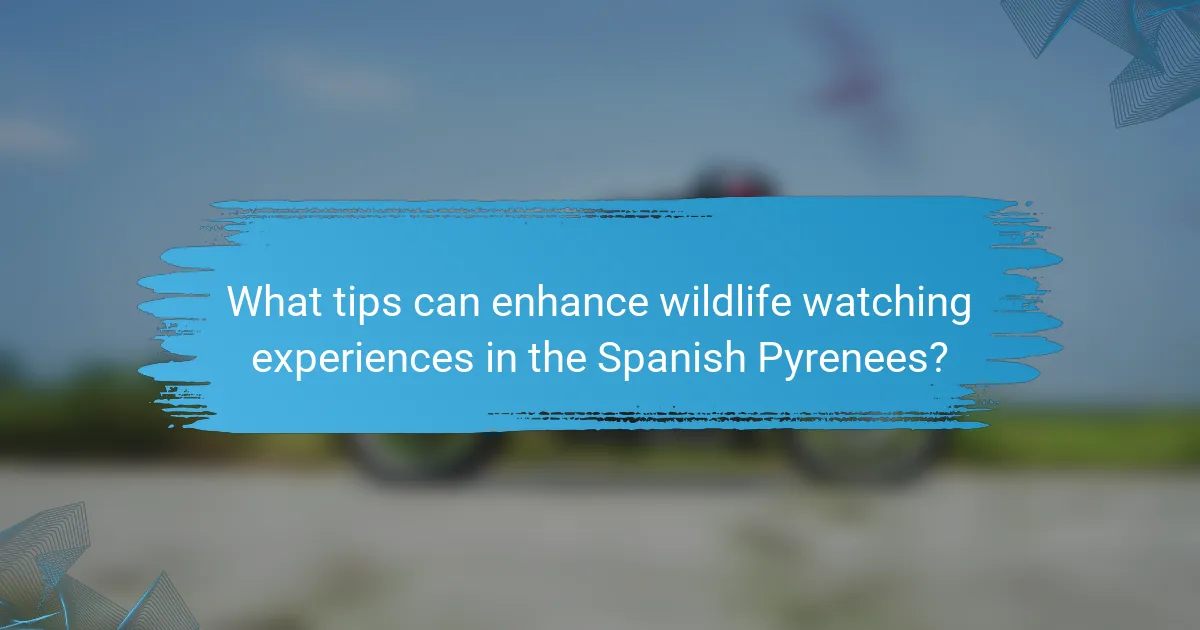
What tips can enhance wildlife watching experiences in the Spanish Pyrenees?
To enhance wildlife watching experiences in the Spanish Pyrenees, visitors should prioritize early mornings or late afternoons for optimal animal activity. Dressing in muted colors minimizes disturbance, while using binoculars or spotting scopes improves visibility. Respecting wildlife by maintaining a safe distance is crucial for both safety and conservation. Engaging with local guides can provide deeper insights into species behavior and habitats.
Which gear is essential for successful wildlife observation?
Essential gear for successful wildlife observation includes binoculars, a field guide, a camera, and appropriate clothing. Binoculars enhance visibility of distant species, while a field guide aids in identification. A camera captures moments, and suitable clothing ensures comfort in varying weather. Other helpful items are a notebook for observations and a backpack for carrying supplies.
How can one improve their chances of spotting wildlife?
To improve chances of spotting wildlife in the Spanish Pyrenees, focus on timing, location, and behavior. Early mornings and late afternoons are optimal for sightings. Seek diverse habitats like forests, meadows, and rivers. Stay quiet and patient to avoid scaring animals. Use binoculars for better visibility. Familiarize yourself with local species and their habits to enhance your experience.
What common mistakes should be avoided during wildlife watching?
To enhance your wildlife watching experience in the Spanish Pyrenees, avoid common mistakes like making loud noises, approaching animals too closely, and ignoring local guidelines. Respecting wildlife is crucial for conservation.
Another mistake is not dressing appropriately for the weather, which can impact your comfort and safety. Carry binoculars for better viewing and avoid using flash photography, as it can disturb animals. Lastly, failing to plan your visit during optimal times for species sightings can lead to disappointing experiences.